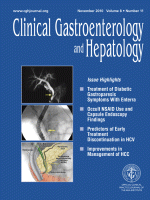Celiac.com - 07/24/2001
Study:
Holmes, Prior, Lane, et. al. Malignancy in Coeliac Disease - Effect of a Gluten-Free Diet Gut 1989; 30: 333-338
Celiac.com Sponsor (A12):
Comments Regarding the Study to the List (January 8, 1997):
I would like to suggest that you check out some of the information on malignancy and celiac disease, especially lymphoma. One of the studies established three categories: One for those who adhere to the diet strictly; one for those who follow the diet, but not very strictly; and one for those who do not follow the diet.
- The first group, after 5 years, shows a significant reduction in risk. In fact, it is quite close to the risk experienced by members of the general population.
- The second group does experience some reduction in risk, but it remains closer to the rate of malignancy in untreated celiac disease.
- The third group has a very high risk of malignancy.
Response by Donald D. Kasarda (January 9, 1997 - Donald D. Kasarda is a research chemist in the Crop Improvement and Utilization Research Unit of the United States Department of Agriculture):
I point out that the people in the first group, which supposedly was adhering to a strict gluten-free diet, were likely to have been including foods made with wheat starch in their diet because that was, and is, common in England where the study was carried out. I have asked several celiac researchers in England if I am correct in this assumption. They agreed that I am. Therefore these people in the strictly gluten-free group were likely to be eating a small amount of gluten each day. The amount is unknown because we dont know the amount of gluten in the starch (this varies according to the manufacturer and possibly according to lot) nor which subjects ingested how much starch.
The apparent small increase in cancer risk for the first group was not statistically significant for those who had been on the diet more than 5 years.
In the group with a normal diet, the relative risk of lymphoma was increased 78 fold, but it should be pointed out that the incidence of lymphoma of the gastrointestinal tract in the normal population is rather low. For the 210 patients in the study, the cancer morbidity was expected to be 0.21. For the 46 patients in the normal diet group, 7 cases of lymphoma were observed. For the 108 patients on the strict gluten-free diet, 3 cases of lymphoma were observed. The statistical significance of the numbers is weak because of the relatively small numbers of patients involved. These are extremely valuable and well-done studies. No criticism is intended. To arrange a study with larger numbers will be extremely difficult although a group in Leiden (The Netherlands) is trying to arrange such a study.
I have no quarrel with those who wish to play it safe, but I dont think we can say for sure that small amounts of gluten in the range of a milligram to a few milligrams per day are harmful on the basis of any scientific study of which I am aware. They may be, or they may not be.
I offer these comments only with the intent of providing as much information to celiac patients as possible so that they can make informed decisions. If anything I have said is incorrect, I hope someone will point out my errors on the net.
Don Kasarda, Albany, CA
FYI: According to the calculations made with Don Kasarda in Nov 1995, 0.1 grams = 100 milligrams is about one-50th of a slice. Therefore,
10 milligrams is about one-500th of a slice of bread.





Recommended Comments
There are no comments to display.